Picture this: you’re staring at a restaurant menu, pages packed with mouthwatering options. Suddenly, the pressure’s on. What’s actually worth trying? Which dishes will totally blow your mind? Here’s the wild part—there really are signature plates around the globe that keep popping up on “best of” lists for a reason. They’re crowd-pleasers, comfort-makers, celebration food, and legend all in one. I’ve scarfed down my way through dozens of cities, swapped bites with locals, and pestered chef friends from Paris to Penang. Call it research, but it’s really just been a flavorful adventure. So, what are the top 10 dishes you simply can’t skip? I’m about to spill the beans, share pro tips, and pass along facts that might surprise you. Ready for a little culinary wanderlust?
The Icons: Dishes That Define Cultures
Let’s start with the heavy hitters—the foods so universally loved or so iconic, skipping them is practically a foodie crime. These are more than meals, they’re cultural ambassadors, each with its own deep roots and colorful stories.
First up, pizza from Naples, Italy. Not that greasy pie from the mall—the real deal. True Neapolitan pizza needs just four things: hand-stretched dough, fresh mozzarella, sweet-tangy San Marzano tomatoes, basil, and a scorching wood-fired oven. The “Associazione Verace Pizza Napoletana” keeps these rules strict; pizza-makers even measure the thickness of the crust. Margherita remains the benchmark, and in 2017, UNESCO added Neapolitan pizza-making to their list of Intangible Cultural Heritage, which is basically culinary sainthood. The trick? Simplicity. Don’t overload it—let those ingredients shine.
Next, Japan’s sushi, which probably isn’t what you get at a gas station. The earliest sushi was about fermenting fish for months. But the kind people love now—vinegared rice with ultra-fresh fish (sometimes raw, sometimes cooked), nori, maybe a wasabi dab—emerged in Edo (now Tokyo) in the 1800s. Sushi chefs train for years just to master the rice. Want to impress a sushi chef? Eat the nigiri in one bite. Skip drowning it in soy sauce, and definitely don’t mix wasabi into your dip.
No list is complete without Mexican tacos al pastor, a dish with surprising global roots. Lebanese immigrants brought shawarma to Mexico. Locals swapped lamb and pita for pork and corn tortillas, tweaking the marinade with native chiles and pineapple. Tacos al pastor are now a Mexico City staple—with vertical spits spinning in corner taquerias. The best ones? You want pork that’s deeply caramelized at the edges, sweet pineapple, punchy salsa, and soft tortillas fresh off the grill.
French croissants? Nothing average about them in Paris. That flaky, buttery masterpiece is all about technique and patience—layer upon layer of dough and butter, chilled between turns. Perfect ones shatter to the bite and smell like heaven. Fun fact: Viennese bakers inspired the original version, but the French gave croissants their world-famous shape and flavor. Best paired with good coffee and a window seat for people watching.
The United States? Fried chicken. Specifically, the Southern style. Crispy, golden crust clinging to juicy meat, driven by buttermilk marinades and secret blends of spices (plenty of paprika and black pepper). There's a reason KFC is a global juggernaut, and there’s a line outside Nashville's Hattie B’s before lunchtime. If you’re making it at home, let the chicken soak in buttermilk (at least overnight) and don’t crowd the pan—crust hates company.
In India, butter chicken (murgh makhani) reigns supreme. This North Indian classic is velvety with a creamy tomato sauce, loads of butter, and soft chicken chunks. Invented (accidentally) in the 1940s in Delhi, it was a way to rescue unsold tandoori chicken. The best butter chicken hits the sweet spot between tangy, creamy, and savory. A little fenugreek leaf does wonders. Pro move: mop up the sauce with fresh naan, don’t even think about leaving a drop.
Bibimbap is Korea’s answer to “all-in-one-bowl.” Warm rice, crisp veggies, a runny egg, sometimes beef, all set off by spicy gochujang. Mix before eating, so every bite’s a flavor explosion. Bibimbap isn’t just delicious—there’s evidence its roots run back to the 1500s. It’s the go-to for Seoulites after a late night. My tip: grill the rice at the bottom until it’s crunchy for extra texture.
China makes the list with Peking duck, a dish so old and loved it’s been on banquets since the imperial days (the first recorded serving: 1330 AD). Proper Peking duck is all about paper-thin crispy skin, carved tableside and wrapped in delicate pancakes with spring onion, cucumber, and hoisin sauce. Serious duck restaurants hang the ducks for hours, pump air under the skin, and lacquer with syrup before roasting. Pair with plum wine if you have it, and never waste a scrap.
Let’s not forget Thailand’s Pad Thai. It may look simple but it packs layers of sweet, salty, sour, and crunchy all at once. Pad Thai’s a relative newcomer—popularized in the 1930s as part of a nation-building campaign to promote Thai identity and rice noodles. Street vendors with roaring woks sling it all day; most locals add extra chili, lime, and crushed peanuts at the table. Want it at home? High heat and quick cooking are your best friends.
Borscht, Ukraine’s fiery-hued beet soup, rounds out our opening legends. As communal as it is comforting, borscht gets its distinctive flavor from slow-cooked beets, cabbage, potatoes, and often beef, finished with a dollop of sour cream and a sprinkle of dill. Fun fact: UNESCO just put Ukrainian borscht on their “Cultural Heritage in Need of Urgent Safeguarding” list in 2022—yes, soup can be that important. Eat it with garlicky pampushky (yeast rolls) if you can find them.
Secret Ingredients, Surprising Origins
You ever feel like a dish just works on another level and wonder what’s going on behind the curtain? Lots of these legendary foods have secret weapons—ingredients, techniques, or even bits of culinary history most folks never hear about. Knowing what’s in the mix can really boost your appreciation when you taste them.
Start with pizza. That dreamy dough owes its supple stretch to slow fermentation—24 hours, sometimes more. Pizza enthusiasts swear by mineral-rich water straight from the Campanian aquifer, claiming it makes dough in Naples unbeatable. And those San Marzano tomatoes? They grow in volcanic soil around Mt. Vesuvius, which packs their flavor with a hit of sweetness you won’t get from any supermarket can. If you ever bake pizza at home, you’ll get a big win just by stretching the dough instead of rolling it—preserves all that precious air for a fluffy crust.
Sushi’s umami kick isn’t just about fish. Sushi rice gets hit with a blend of rice vinegar, sugar, and salt as soon as it’s cooked—making the grains sticky and zippy. Some top spots also slip in kombu (dried sea kelp) while cooking rice for subtle savoriness. And ever notice great sushi has a cool shine? That comes from fanning the rice as it cools. If you want to up your home sushi game, try subbing in leftover roasted veggies or crisp fried tofu for fish. They’ll take on the same bright flavors.
Tacos al pastor love their bold, brick-red color—that’s all thanks to achiote, a seed paste native to Central America. It gives a subtle earthiness and a shade that’s instantly appetizing. Pineapple isn’t just for topping, either—it gets blended into the marinade for a sweet bite that balances the heat. Pro tip: heat your tortilla for a few seconds right before filling, otherwise it’ll snap the second you fold it. Oh, and never settle for pre-shredded lettuce; cilantro and raw onion win every time for a fresh crunch.
With croissants, don’t forget—the quality of your butter matters almost as much as your rolling technique. French butters like Échiré or President have more fat and less water, making flakier layers and a deeper taste. When bakers talk about “lamination,” they’re not protecting business cards—they’re building thin, butter-drenched sheets. If you’re after that proper shatter, let the dough chill long enough between folds. Home bakers love using a wine bottle if they don’t have a fancy rolling pin (I may or may not have done this one Saturday when Evelyn used the rolling pin to smash ice and forgot to put it back...).
Southern fried chicken stands out because of two things: the “double dip” method and cast iron cooking. Drenching the chicken in seasoned flour, then buttermilk, then flour again sets the crust up for extra crunch. And frying it in heavy cast iron keeps heat steady, so nothing burns or gets soggy. The spice mix? Some cooks keep it secret for a lifetime, passing their recipes down like heirlooms. Famous fact: during the Civil War, women in the South would cook up fried chicken to sell at railroad stops as a way to make extra money.
Butter chicken’s magic comes down to one unusual trick—cashew or almond paste blended right into the sauce alongside cream and butter. It thickens everything and makes the sauce silky. You might not know this, but good butter chicken often uses slightly smoky chicken, cooked in a tandoor oven, before bathing in tomato and spice. At home, you can fake a tandoor with a super hot broiler. Don’t skip dried fenugreek leaf (kasuri methi), it’s the dish’s aromatic ace card.
Bibimbap looks easy, but every topping brings something different—namul (seasoned veggies), sweet pickled radish, spicy gochujang, chewy bulgogi, crunchy sesame, and sometimes wild roots for depth. Want that golden “dolsot” (crisp) crust at the bottom? Use a stone or heavy-bottomed pot and give it time without stirring. Bibimbap started as a way to use up leftovers after New Year’s feasts. Even today, restaurants try to offer at least five different veggies for good luck.
With Peking duck, air is everything. Duck air-pumped under the skin before hanging for a day dries things out and makes for crispier skin. The maltose syrup brushed over the whole bird gives color and a glassy finish. Good duck houses adjust the oven temperature so the skin “shatters” like candy. In Beijing, it’s a point of pride to carve exactly 120 slices from one duck. If you want to channel that in your kitchen, try roasting chicken thighs with a honey-soy glaze and a blast of high heat at the end.
Pad Thai’s tart, complex flavor owes a lot to tamarind paste—unsweetened, tangy, and nothing like ketchup. Fish sauce brings umami, palm sugar rounds out the taste, and the noodles should just barely soften, never mushy. Shrimp is traditional, but chicken, tofu, and even crispy pork belly work wonders. Pad Thai’s popularity took off after WWII when rice was scarce and the government needed to stretch supplies. The simple way to wow at home: cook the egg in the pan first, push it aside, then add the noodles and everything else, so it picks up flavor.
Finally, borscht pulls off its earthy comfort thanks to a one-two punch of sweet and tangy—root veg plus vinegar or lemon juice. Beet greens sometimes join the mix for depth. Many families add beans, prunes, or even apples for their own twist. My Ukrainian friend sweats onions low and slow, then layers in veg bit by bit. Leftover borscht tastes better the next day as flavors meld, and yes, a slab of black bread with fresh garlic takes it over the top.

Where to Find Authentic Flavors
If you’ve ever been let down by limp take-out sushi or soggy pad Thai, you know not all kitchens do justice to legendary dishes. Getting the real deal can be as simple as following a crowd—or as tricky as tracking down a hidden neighborhood gem. So where should you start if you want to taste the top 10 with all their punch, crunch, and wow factor?
There’s no substitute for eating pizza in Naples, but some U.S. pizzerias obsessed with authenticity come close. Watch out for short ingredient lists, brick ovens, and a chewy crust with leopard spots—places like Una Pizza Napoletana (New York or San Francisco) or Pizzeria Bianco (Phoenix) have loyal fans and raves from Italian expats. Once, I spent half an hour waiting outside just so I could see if they really nailed the “00” flour crust. Verdict: nearly as good as Naples—don’t skip the olive oil drizzle at the end.
Japan’s best sushi shops buy fish at the early-morning Tsukiji (now Toyosu) Market. Outside of Tokyo, top-tier sushi bars operate in most major cities—look for “omakase” (chef’s choice) menus. The chef may size you up and tailor the meal by the look in your eye! Closer to home, seek spots that serve warm rice, change their fish line-up daily, and never pile on mayo or fried onions. And if you hit Japan, try conveyor belt sushi for a fun, affordable thrill.
Mexico City’s taquerias are ground zero for tacos al pastor. The smell of pork fat and roasting pineapple hangs in the air around El Vilsito, El Huequito, and dozens of corner joints. Can’t travel? Many big North American cities boast serious taco scenes—Los Angeles, Houston, and Chicago regularly compete for “best outside Mexico.” Check for slow-roasted pork cut fresh off the spit, corn tortillas made in-house, and salsas that have a real kick.
Top croissants hide in plain sight across Paris—Du Pain et des Idées, Maison Pichard, and Blé Sucré draw lines before sunrise. Great bakeries in New York, London, and Melbourne have absolutely caught up—just ask anyone fighting for a table at Dominique Ansel. In a pinch, a simple croissant baked all the way through (no raw dough in the folds) and made with good butter will bring a bit of Paris to your breakfast.
Craving fried chicken? Southern classics like Willie Mae’s Scotch House (New Orleans), Prince’s Hot Chicken Shack (Nashville), or Gus’s World Famous Fried Chicken (Memphis) set standards with shatteringly crisp skin and moist, seasoned-to-the-bone meat. Korean fried chicken chains (Bonchon, Pelicana) give a totally different, twice-fried crunch—worth seeking out if you love heat and sticky sauce.
Butter chicken meccas dot Delhi—Moti Mahal is legendary, and international chains (like Dishoom in London) have helped take it global. In the U.S., top Indian restaurants don’t skimp on spices and always serve generous portions of sauce. If you spot dried fenugreek leaf in the ingredient list, odds are you’re in for a treat. To try cooking it yourself, grab good-quality yogurt (for marinating) and double the butter for richness.
Seoul’s Gwangjang Market stands out for bibimbap—endless bowls, each brimming with rainbow-hued toppings. In America, Koreatowns in Los Angeles and New York are go-to destinations. Home cooks can buy banchan (side dishes) at Asia markets to shortcut the prep work. If you want sizzling crust, use a hot stone bowl (dolsot) or cast iron beginner’s luck—the sound of that rice crisping is the best kind of dinner symphony.
Beijing’s Quanjude and Da Dong are the titans of Peking duck. Outside China, top dim sum or specialty restaurants offer one-day lead time on duck; don’t be shy about asking how it’s cooked (air-dried and slow-roasted beats steamed every time). A friend in Chicago told me about a duck house where they slice, serve, and demonstrate “how to wrap.” Table theater, every meal.
Bangkok street corners claim bragging rights for Pad Thai—grab a plate from Thip Samai or Jay Fai (who has one of those rare Michelin stars for a street-food joint). In the U.S., ask if they use tamarind—not ketchup or sugar. Pro tip: Add your own chili flakes and lime at the table instead of ordering it “spicy” off the bat; it’s easier to tune to your taste.
Ukrainian grandmas are the real borscht masters. North American Eastern European delis, or authentic Ukrainian restaurants, make slow-simmered pots loaded with beets. Don’t trust anything the color of cream of tomato soup—look for deep magenta, with beet shreds and a balance of sour and sweet. If you want to make it yourself, pick up extra fresh dill and add a hard-boiled egg for a meal in a bowl.
| Dish | Key Ingredient | Place of Origin | When Invented |
|---|---|---|---|
| Pizza Napoletana | San Marzano tomatoes, mozzarella | Naples, Italy | Late 1700s |
| Sushi | Vinegared rice, fresh fish | Tokyo, Japan | 1800s (modern style) |
| Tacos al Pastor | Pork, pineapple, achiote | Mexico City, Mexico | 1920s |
| Croissant | High-fat butter, dough | Paris, France | 1800s (French version) |
| Fried Chicken | Chicken, buttermilk, flour | Southern U.S. | Early 1800s |
| Butter Chicken | Chicken, tomato, butter | Delhi, India | 1940s |
| Bibimbap | Rice, egg, veggies, beef | Korea | 1500s |
| Peking Duck | Duck, maltose syrup | Beijing, China | 1300s |
| Pad Thai | Rice noodles, tamarind, shrimp/tofu | Thailand | 1930s |
| Borscht | Beets, cabbage, beef/sour cream | Ukraine | 1600s (modern version) |
Pro Tips, Trivia & How to Bring These Dishes Home
Ready to taste these all-time champs but can’t book a flight right now? Good news—so many legendary dishes can absolutely be tackled in your kitchen or a solid local spot. Here are my best tips, along with trivia that’ll spice up your next dinner party.
Pizza at home? Invest in a pizza stone or steel, and let the oven run as hot as it’ll go—think 500°F or more. Toppings should be light, dough should be stretched out thin, and the moment the cheese blisters but hasn’t gone brown, pull it. Or try frying store-bought dough in a sizzling iron pan for an emergency fix. Did you know: the Margherita pizza was allegedly named after Queen Margherita of Savoy, who got the first bite in 1889.
Sushi fans, don’t stress over rolling—hand-molded nigiri is where it’s at. Wet your hands, press small ovals of sushi rice, and top with strips of cured salmon, seared tuna, or seasoned tofu. If you like the adventure, try a “chirashi bowl”—just arrange toppings over a bowl of seasoned rice. (Random trivia: sushi is eaten with hands as often as with chopsticks, even by snobby Tokyo businessmen.)
Tacos al pastor are tough to duplicate unless you’ve got a vertical spit. But pork marinated in achiote, pineapple juice, vinegar, and spices, then roasted on a grill, gets close. Slice thin, pile on tortillas, and top with salsa. Key fact for party banter: Mexico City taquerias often run all night, making tacos al pastor the ultimate late-night snack.
Croissants need patience—let the dough chill fully between folds so butter stays put. Short on time? Some bakeries sell frozen croissants to bake fresh at home—worth every penny. A neat stat: in France, the average person eats more than half a croissant per week.
For fried chicken, brine your pieces in buttermilk and salt overnight—then double-dip in seasoned flour just before frying. Don’t crowd the skillet. A quick trivia bite: fried chicken is now even more beloved in Seoul than in Memphis, with Korean chains outnumbering American fried chicken spots in some neighborhoods.
Butter chicken works best with boneless thighs, marinated in yogurt, lemon juice, and garam masala. Simmer in tomato, butter, and cream, stirring often until thick. Cool fact: it was invented by mixing leftover tandoori chicken into a buttery tomato sauce at Moti Mahal in Delhi.
Bibimbap is totally versatile; use whatever veggies you have at home. If you keep gochujang in your fridge (it lasts forever), you’re already halfway there. A little sesame oil and a runny egg on top tie it all together. The literal translation is “mixed rice”—don’t eat it until you stir like crazy.
Peking duck at home is no joke, but the sauce and pancakes work great with roast chicken or pork. Try brushing skin with honey and soy, then roasting on a rack for crispy results. For expert cred: the best duck chefs measure their slices to match guest headcount exactly, every single night.
Pad Thai feels easy with a hot pan, softened noodles, and a “sauce” of tamarind, fish sauce, and a hit of sugar. Add peanuts and lime last. Wild fact: Thailand actually created government song lyrics all about Pad Thai as part of their 20th-century modernization campaign.
Borscht is hearty enough for any season. Vegetarians, swap beef for extra beans. It pops with a swirl of sour cream and a pile of dill. In Ukraine, every family has their version—there are more than 300 distinct types across the country.
If you want to deepen your food chops, try a monthly experiment: pick one dish, research its history, source one ingredient you’ve never used before, and cook it for friends. You’ll taste the world without leaving your neighborhood, and maybe win bragging rights at your next dinner party. The table of icons above is just the beginning—these meals are windows to culture, memory, and joy, all on a plate.
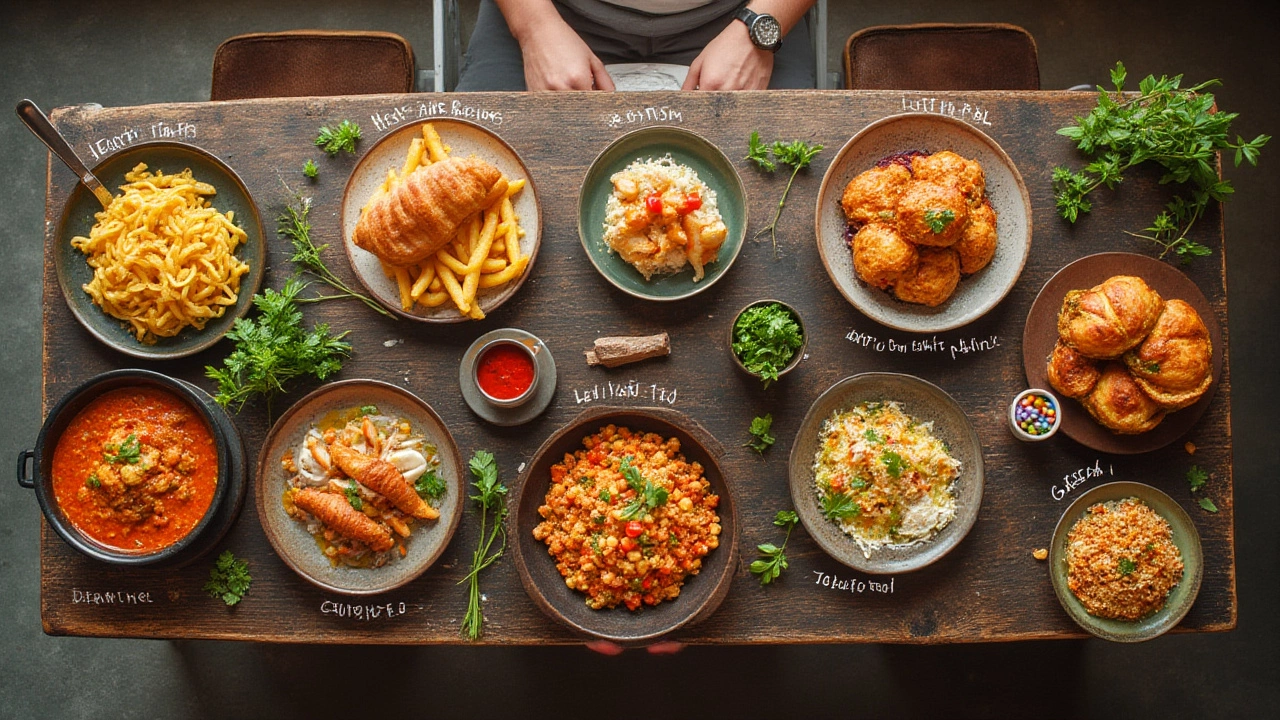

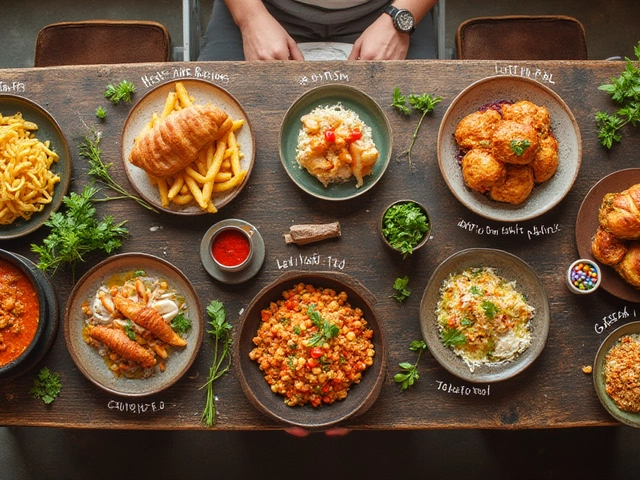
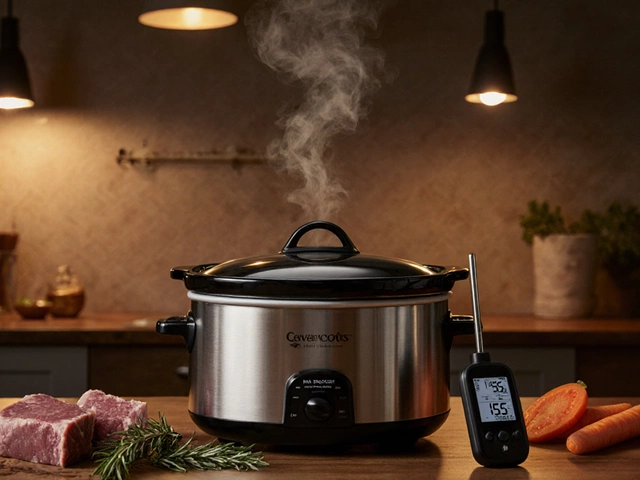


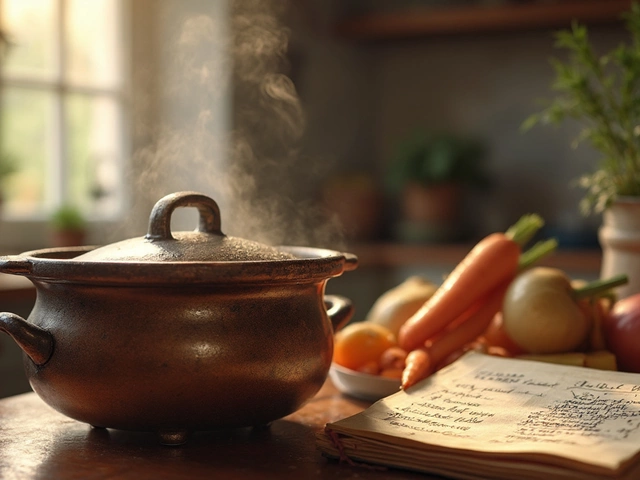
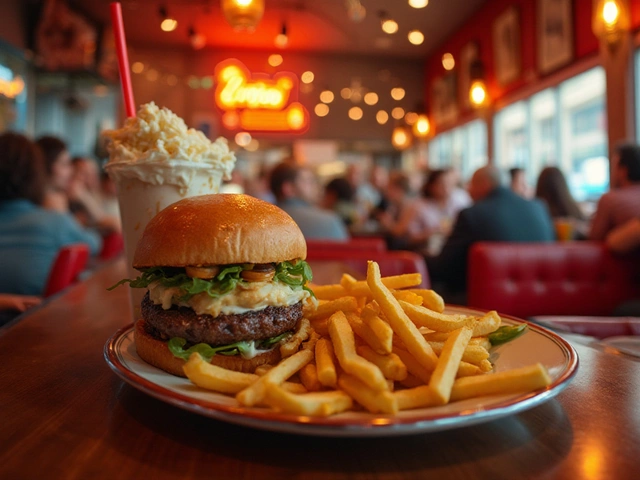
Write a comment